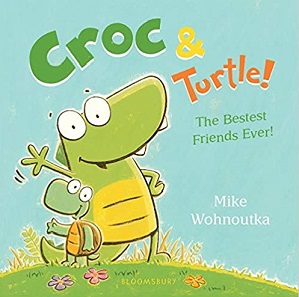Keeping Control: Strike Zone by Mike Lupica
 Nick Garcia had grown up almost in the actual shadow of the old Yankee Stadium and in the virtual shadow of his idol, Yankee pitcher Michael Arroyo. Now Nick is twelve years old, and in his last summer of Little League ball with his team. Coach Vierra tells him that he believes Nick throws harder and faster than Arroyo at his age.
Nick Garcia had grown up almost in the actual shadow of the old Yankee Stadium and in the virtual shadow of his idol, Yankee pitcher Michael Arroyo. Now Nick is twelve years old, and in his last summer of Little League ball with his team. Coach Vierra tells him that he believes Nick throws harder and faster than Arroyo at his age.
"I saw Michael play in Little League. Heard the sound the ball made in the catcher's glove. The sound you make is louder."
Nick dreams of his team as the champions of the Dream League and himself as Most Valuable Player, getting to throw out the ball at Yankee Stadium. The pressure is on. In his league there's a kid named Benny who's hitting home runs in every game, and rival pitcher Eric Dobbs is throwing a lot of fastball strikes, too.
Nick knows he can throw heat. But being a winning pitcher comes down to one thing. Control.
But controlling his pitches are only part of what it's going to take. His parents are undocumented immigrants from the Dominican Republic, each working two jobs, and his older sister has lupus, requiring frequent trips to urgent care. The family is used to tight money, but when his father is swept up by an ICE (Immigration and Customs Enforcement) agent and jailed, Nick has to deal with the very real fear that his parents may be deported and he and his sister, as U.S. citizens, will be forced to remain behind with foster parents or leave home and go with his mom and dad back to the Dominican Republic. Nick knows that he has to stay in control of his own emotions--for his parents' sake and for his team's chance to share the Dream League trophy.
Keeping cool under pressure is one theme of top-selling sports novelist Mike Lupica's Strike Zone (Philomel Books, 2019). But Lupica's narration also portrays the support and cooperation it takes to maintain family unity and team support. Nick gets by with the humor and help from his best friends Ben and Diego, his sister, his coach, the strength of his mother and father, and the help of strangers, including his idol Michael Arroyo. Lupica's game-play writing is, as always, taut and authentic, but the winning season story is matched with the drama of a threatened family and the community who supports them, making this middle grade novel more than just another "big game" story. A follow-up to Lupica's hit, Heat,
this one stresses that, although natural talent goes a long way, keeping strong and in control goes all the way.
Says Kirkus in their starred review, "Lupica skillfully addresses the timely and complicated topic of living as the child of undocumented immigrants and the uncertainty facing many American families. This exceptional baseball novel delivers both lively sports action and critical subject matter."
Labels: Baseball--Fiction, Bronx (New York, Family Life--Fiction, N.y.)--Fiction, U. S. Immigration and Customs Enforcement--Fiction (Grades 5-8)























